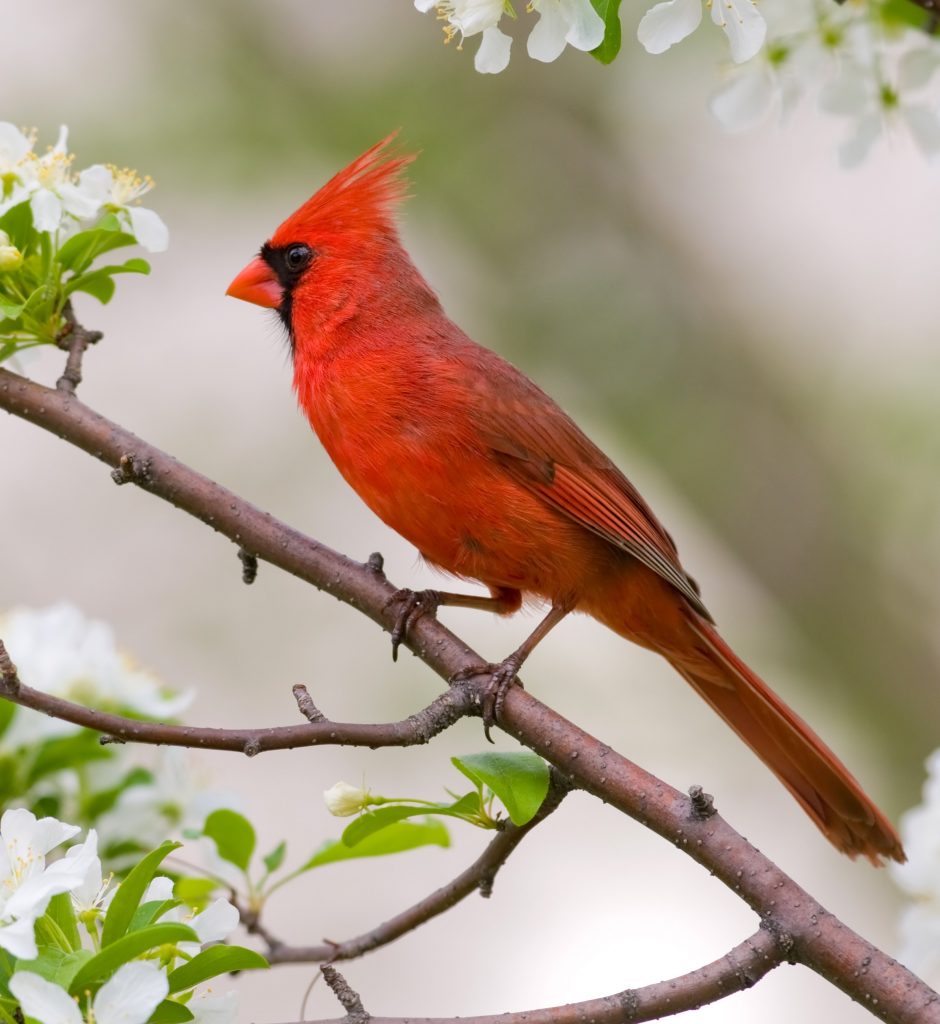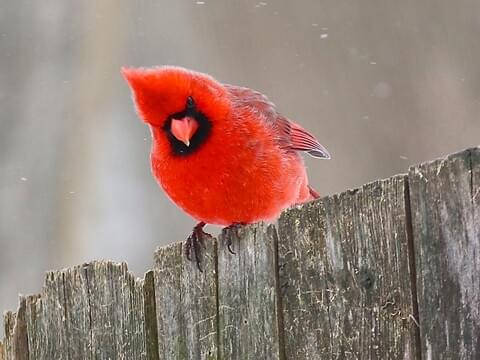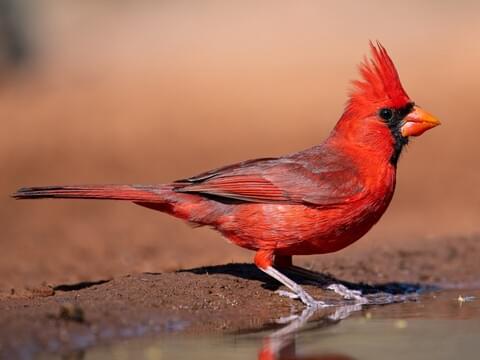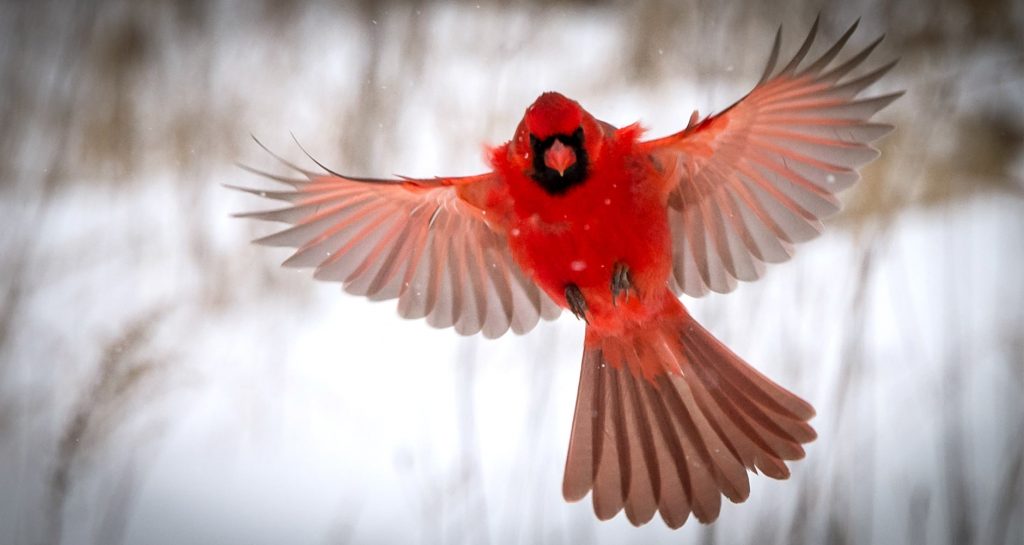The article titled “The Bright Red Birds: The Northern Cardinals” provides an insightful glimpse into the lives of these vibrant bird species. With their bright red plumage, Northern Cardinals brighten up the woods and backyards they call home all year long. Found across various regions of the United States, Canada, Mexico, and Central America, these birds prefer to stay in a single area instead of migrating. In order to attract cardinals to your yard, adding specific plants to your landscaping can do the trick. With 19 recognized subspecies, these birds have slight variations in measurements and coloration. Cardinals thrive in habitats that combine woodland edges and grasslands, as well as wooded streamside edges. Their diet consists of seeds, fruit, grain, weed seeds, and insects, which they gather to feed their nestlings. By planting trees and shrubs with thick foliage, you can entice these beautiful birds to visit your yard. Interestingly, cardinals play a role in the distribution of tree seeds and contribute to forest survival and expansion. However, they also face predation from housecats when venturing near the ground.

Habitat and Distribution
Eastern United States and Canada
Northern Cardinals, also known as Redbirds, are a familiar sight in the Eastern United States. They are found throughout this region, including southeastern Canada. With their bright red plumage, they add a burst of color to the woods and backyards in this area.
Southern and Southwestern United States
While Northern Cardinals are most commonly associated with the East, they can also be found in parts of the Southern and Southwestern United States. These birds can be seen throughout states such as Texas, Oklahoma, and Louisiana, bringing their vibrant presence to these regions.
Mexico and Central America
In addition to their presence in North America, Northern Cardinals are also found in Mexico and Central America. Their range extends throughout much of these regions, making them a beloved and recognizable bird in these areas as well.
Year-round Residents
Unlike many birds that migrate to warmer climates during the winter months, Northern Cardinals are year-round residents in their habitats. They do not undertake long-distance migrations but instead stay in the same area throughout the year. This makes them a constant and reliable presence in the regions they inhabit.
Common Regions
Northeast
One of the most common regions to find Northern Cardinals is the Northeastern United States. Their striking red plumage stands out against the backdrop of green forests and snowy landscapes. From Pennsylvania to Maine, residents in this area can enjoy the presence of these beautiful birds.
Southeast
The Southeastern United States is another region where Northern Cardinals are frequently seen. States such as Florida, Georgia, and Mississippi are home to these red-feathered residents. Their bright colors complement the lush vegetation and warm climate of this area.
Midwest
The Midwest is also a common region where Northern Cardinals can be found. From parts of Ohio to the plains of Kansas, these birds can be spotted perched in trees or darting through open fields. Their songs fill the air in states such as Illinois, Indiana, and Iowa.
Southwest
While not as prevalent as in other regions, Northern Cardinals can also be found in parts of the Southwest. Their presence can be seen in states such as Texas, Oklahoma, and Arizona, where they bring a touch of vibrant red to the desert landscapes.
Attracting Cardinals to Your Backyard
Landscaping with Certain Plants
To attract Northern Cardinals to your backyard, consider landscaping with certain plants that they find particularly appealing. Cardinals are known to be attracted to fruits and seeds, so incorporating plants such as blackberry bushes, cherry trees, and sunflowers can entice these birds to visit your yard.
Planting Trees and Shrubs with Thick Foliage
Another way to attract Northern Cardinals is by planting trees and shrubs with thick foliage. These provide shelter and nesting sites for the birds, making your backyard a welcoming habitat for them. Consider planting trees like dogwoods or shrubs like viburnums, which offer both dense foliage and a source of food through their berries.

Variations and Subspecies
19 Recognized Subspecies
Within the Northern Cardinal species, there are 19 recognized subspecies. These subspecies exhibit slight variations in measurements and coloration. Some subspecies may have brighter red plumage, while others may have more muted tones. These variations highlight the diversity within the species and add to the beauty of these birds.
Measurements and Coloration Variations
The measurements of Northern Cardinals can vary slightly among subspecies. On average, these birds measure around 8.3 to 9.1 inches in length, with a wingspan of about 9.8 to 12.2 inches. As for coloration, male Northern Cardinals are known for their bright red feathers, while females have a more muted reddish-brown plumage with hints of red. This contrast in coloration between males and females adds to the visual appeal of these birds.
Preferred Habitat
Woodland Edges and Grasslands
Northern Cardinals prefer habitats that are a mix of woodland edges and grasslands. These areas provide a balance of cover and open space, allowing the birds to forage for food while still having access to trees for nesting and protection. Woodland edges and grasslands provide an ideal environment that supports the cardinal’s lifestyle and breeding habits.
Wooded Streamside Edges
Another preferred habitat for Northern Cardinals is wooded streamside edges. These areas offer a combination of trees, water sources, and understory vegetation, creating a diverse and rich environment for the birds. The streamside edges provide an abundant food supply and nesting sites, making it an attractive location for cardinals to establish their territories.

Cardinals’ Diet
Seeds
Seeds are a staple in the Northern Cardinal’s diet. These birds have strong beaks that are well-suited for cracking open the hard shells of various seeds. They feed on a variety of seeds, including those from plants like sunflowers, cherries, and grasses. Providing a bird feeder with a mix of seeds can attract cardinals to your backyard.
Fruits
Cardinals also enjoy eating fruits, particularly those that are bright in color. Fruits like blackberries, raspberries, and mulberries are a favorite among these birds. By planting fruit-bearing trees or shrubs in your yard, you can offer a natural feast for cardinals and increase the likelihood of attracting them.
Grains and Weed Seeds
Grains and weed seeds are also part of a Northern Cardinal’s diet. These birds may forage on the ground for fallen grains or seeds from weeds and grasses. They are adept at finding hidden treasures amidst the foliage and using their beaks to extract the tiny food items.
Insects for Nestlings
During the breeding season, Northern Cardinals also rely on insects to feed their nestlings. Insects provide a protein-rich meal that is vital for the growth and development of the young birds. By attracting insects to your yard through a diverse range of plants, you can indirectly support the Northern Cardinals as they raise their offspring.
Contribution to Forest Survival
Seed Distribution
Northern Cardinals play a crucial role in the survival and expansion of forests through their seed distribution. As they consume seeds from various plants, they also transport these seeds to new locations through their droppings. This action helps to disperse the seeds and allows for the potential growth of new trees and vegetation, contributing to the overall health and diversity of the forest ecosystem.
Forest Expansion
In addition to their seed distribution role, Northern Cardinals can contribute to forest expansion. By creating suitable habitats and providing food sources, humans can attract cardinals to areas where the growth of new forests is desired. As cardinals establish their territories and raise their young, they inadvertently aid in the ecological process of forest expansion.

Predation by Housecats
While Northern Cardinals are primarily known for their beautiful plumage and melodious songs, they also face threats from predators. One of the main predators of cardinals is domestic housecats. Cardinals spend time on or near the ground foraging for food, making them vulnerable to cat attacks. As such, it is important for pet owners to supervise their cats and take measures to minimize their impact on local bird populations.
In conclusion, Northern Cardinals are charming and captivating birds that bring vibrancy to their habitats in the Eastern United States, parts of the Southern and Southwestern United States, Canada, Mexico, and Central America. Their year-round residency in wooded areas and backyards makes them a joy to observe and appreciate. By creating welcoming environments and providing a variety of food sources, we can attract these beautiful birds to our own backyard, contributing to their well-being and the preservation of their species.
Leave a Reply